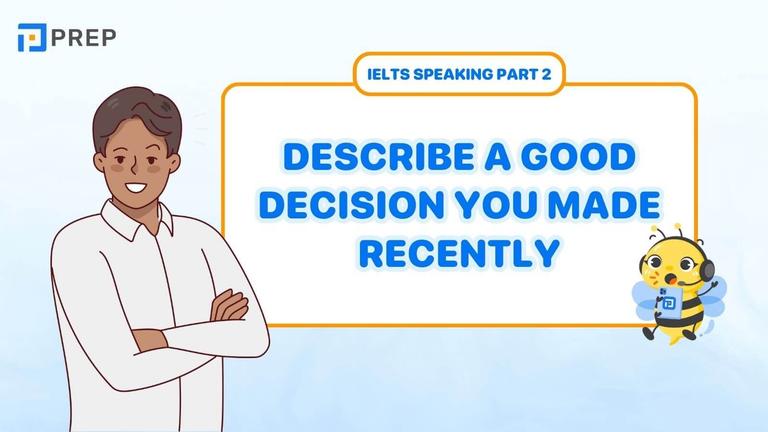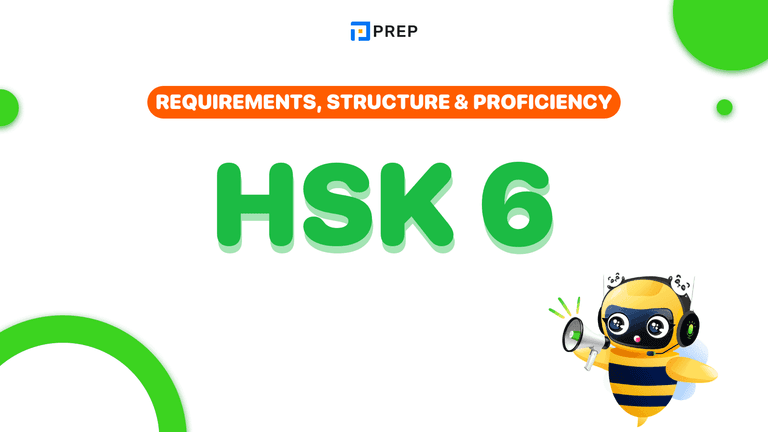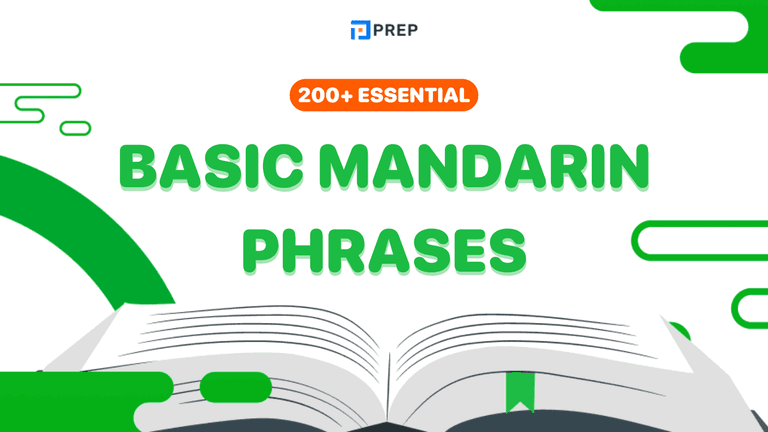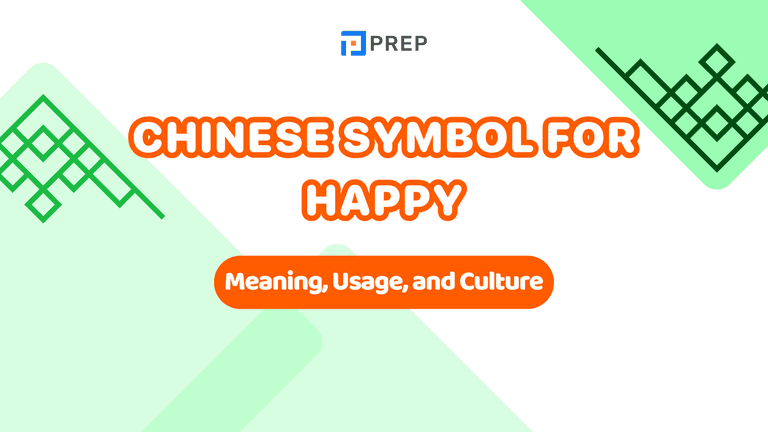30 best ways to respond to How are you doing in English
When you first encounter the phrase "how are you doing in English," you might wonder if it's simply another way to ask about someone's well-being or if there's something deeper at play. This common greeting appears in countless conversations daily, yet many English learners struggle with understanding its nuanced usage and appropriate responses. Whether you're preparing for an English exam, improving your conversational skills, or simply want to sound more natural in everyday interactions, mastering how are you doing in English opens doors to more confident communication.
- I. What Does How Are You Doing in English Mean?
- II. "How Are You Doing?" in Real Life: When & Where
- III. How to Respond to How Are You Doing in English
- IV. Differentiating How Are You Doing, What Are You Doing and How Do You Do
- V. Sample Dialogue Using How Are You Doing in English
- VI. Exercise on Using How Are You Doing in English
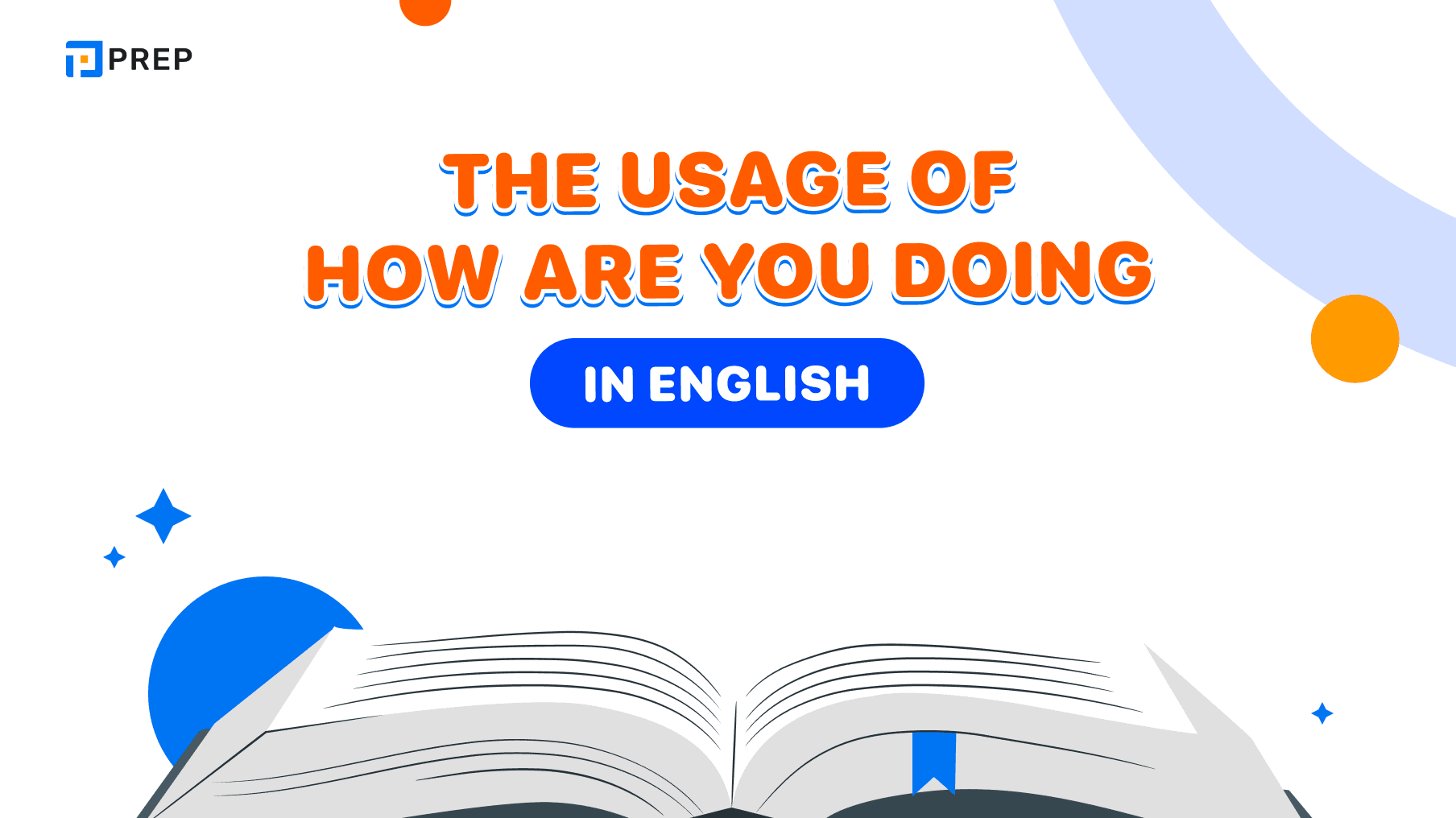
I. What Does How Are You Doing in English Mean?
The phrase "How are you doing?" is widely used in English, not just as a literal question about someone's current situation, but as a social ritual that fosters connection and demonstrates politeness. Understanding the how are you doing meaning becomes crucial for effective communication, as it can refer to a person's health, mood, or circumstances. However, in most everyday contexts, it functions more as a friendly greeting than a request for detailed information.
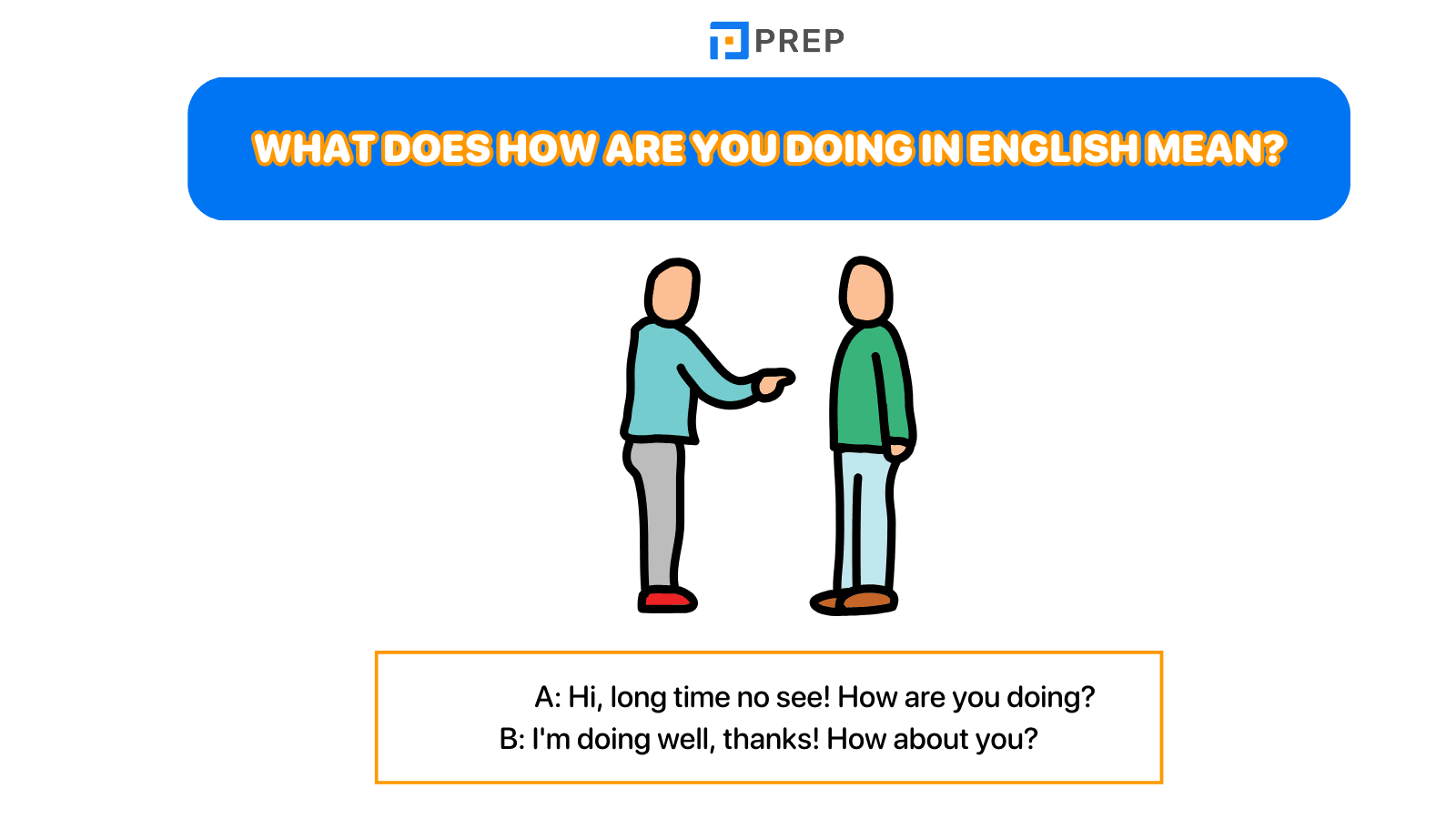
Linguists refer to this kind of expression as phatic communication—language used for social bonding rather than information exchange. That's why when someone asks, "how are you doing in English," the expected response is usually brief and positive (e.g., "I'm doing well, thanks!"), rather than a deep dive into one's personal life or recent challenges.
Grammatically, the phrase follows the structure:
How (question word) + are (auxiliary verb) + you (subject) + doing (main verb in -ing form).
It’s in the present continuous tense, which typically indicates ongoing states or activities. However, in this context, it’s not really about grammar precision—it’s about sounding natural and socially aware.
Example conversation:
-
A: Hi, long time no see! How are you doing?
-
B: I'm doing well, thanks! How about you?
Understanding this phrase as both a grammatical structure and a cultural habit will help you communicate more fluently and appropriately in English-speaking environments when discussing how are you doing in English.
II. "How Are You Doing?" in Real Life: When & Where
Context determines everything when using "how are you doing in English." The appropriateness varies based on your relationship with the person, the setting, and cultural expectations.
Informal Situations: Use this greeting with friends, family, and close colleagues to create warmth and encourage genuine sharing. Perfect for catching up with old friends or casual workplace conversations where how are you doing in English feels natural.
Formal Situations: In business meetings or professional events, this phrase works but consider more formal alternatives when meeting clients or senior executives for the first time.
|
Relationship Type |
Conversation Context |
Appropriate Usage |
|
Close Friends |
Casual meeting, phone calls |
Always appropriate, encourages sharing |
|
Colleagues |
Office hallway, lunch break |
Good for building rapport |
|
Acquaintances |
Social events, chance encounters |
Safe, friendly greeting |
|
Strangers |
Service interactions, introductions |
Use cautiously, may seem too personal |
|
Authority Figures |
Formal meetings, presentations |
Consider more formal alternatives |
Close relationships welcome this greeting enthusiastically, while distant or hierarchical relationships might benefit from more formal approaches to initial interactions when considering how are you doing in English.
III. How to Respond to How Are You Doing in English
We'll explore the ways to respond to the question about how to answer how are you doing with various options right below! Understanding how to answer how are you doing properly helps you navigate different social situations with confidence.!
|
Good condition/state |
Normal condition/state |
|
|
|
Not good/bad condition/state |
Evading the answer |
|
|
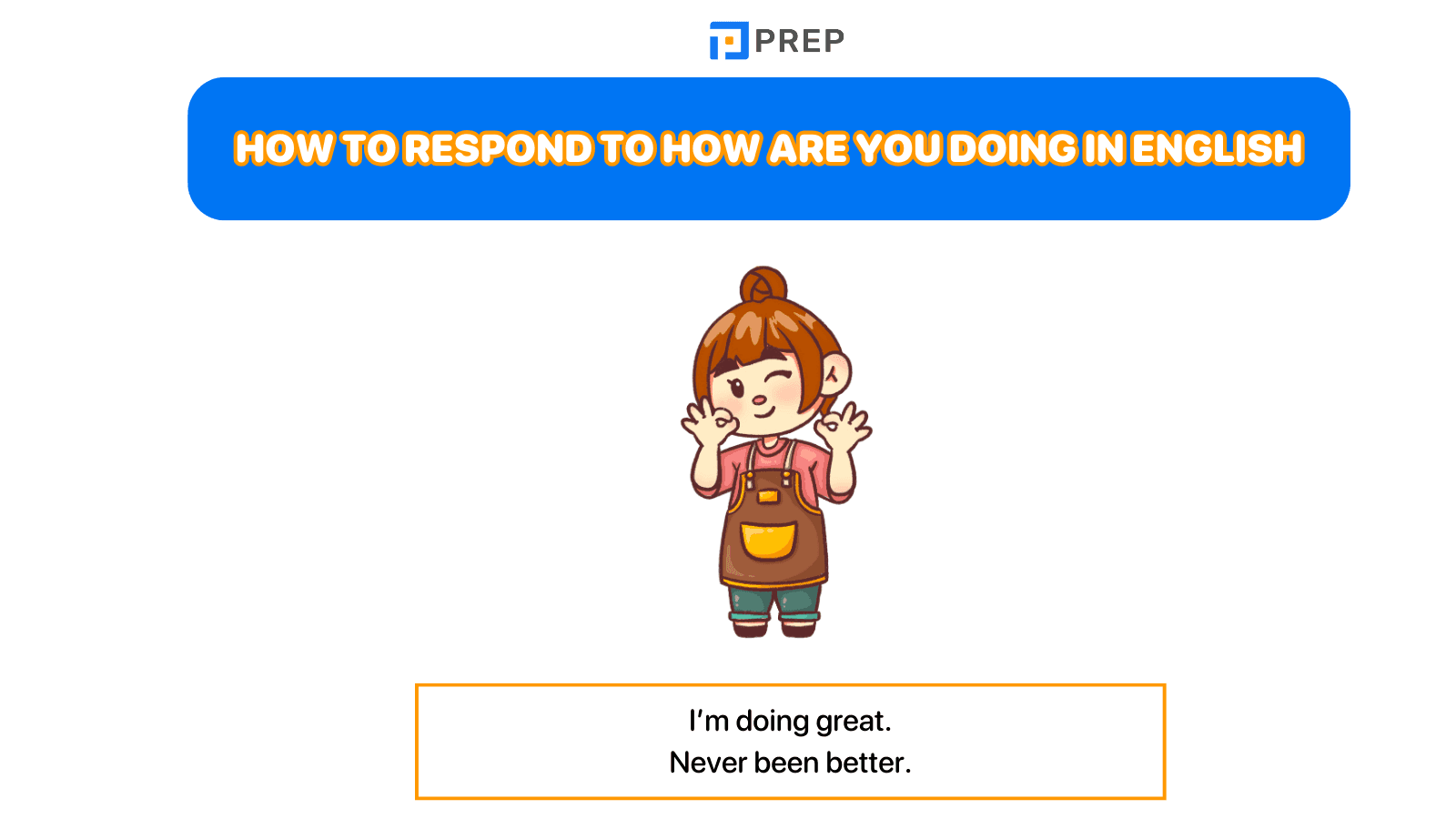
IV. Differentiating How Are You Doing, What Are You Doing and How Do You Do
Are How are you doing, What are you doing, and How do you do different or similar? We'll find out the distinctions right below! Understanding these differences helps clarify how are you doing meaning in various contexts.
|
How are you doing? |
What are you doing? |
How do you do? |
|
|
Meaning |
To ask about someone's health, mood, or current situation. |
To ask about the activities or tasks someone is currently engaged in. |
Although it appears to be a question, "How do you do?" does not actually inquire about someone's condition. It is often used as a formal greeting in specific situations, such as when meeting someone for the first time. |
|
Example |
Hi there! Long time no see. How are you doing? |
What are you doing right now? |
How do you do? My name is Alex. Nice to meet you. |
V. Sample Dialogue Using How Are You Doing in English
Reference the sample dialogues below to better understand how to use how are you doing in English in real conversations.
1. Casual Workplace Encounter
Setting: Two colleagues meeting in the office hallway on Monday morning
-
Sarah: Hey Mike! How are you doing this morning?
-
Mike: Oh, hey Sarah! I'm doing pretty well, thanks. Just trying to get back into the Monday groove, you know? Had a great weekend hiking with my family. How are you doing?
-
Sarah: That sounds wonderful! I'm doing good too. A bit tired though - I spent most of the weekend helping my sister move to her new apartment. But it's nice to be back at work where I can actually sit down!
-
Mike: Oh wow, moving is exhausting! Did everything go smoothly?
-
Sarah: Yeah, mostly. Just a lot of heavy lifting and way too many boxes. But she's all settled in now, so that's the main thing.
-
Mike: Well, I hope you can take it easy this week and recover. I should probably grab some coffee before the team meeting. See you later!
-
Sarah: Definitely need that coffee! See you in the meeting room.
2. Formal Business Introduction
Setting: A networking event where two professionals are meeting for the first time
-
Jennifer: Good evening, I'm Jennifer Walsh from Marketing Solutions Inc. How are you doing tonight?
-
David: Good evening, Jennifer. I'm David Chen, and I'm doing very well, thank you for asking. This is quite an impressive event - I've already met several interesting people in the industry. How are you finding the conference so far?
-
Jennifer: I'm doing great, thanks! This is actually my third year attending, and the quality of speakers keeps getting better. I particularly enjoyed the presentation on digital transformation strategies this afternoon. Are you here representing a specific company?
-
David: Yes, I'm the operations director at TechFlow Dynamics. We specialize in supply chain optimization software. I'm hoping to connect with potential partners who might benefit from our solutions. What brings you to the conference?
-
Jennifer: That sounds fascinating! We're always looking for ways to improve our operational efficiency. I'm here primarily to explore new marketing technologies and trends that could benefit our clients. Perhaps we should exchange business cards and schedule a proper meeting next week?
-
David: I'd be delighted to discuss potential collaboration opportunities. Let me give you my card.
VI. Exercise on Using How Are You Doing in English
Choose suitable questions to fill in blanks: How are you doing, What are you doing, How do you do.
-
You hear some strange noises coming from your roommate’s room and knock to ask, “__________?”
-
You're introduced to your professor’s colleague at a formal reception. You shake hands and say, “__________?”
-
Your cousin calls you late at night, and you want to check on them. You ask, “__________?”
-
At the airport, you spot an old coworker you haven’t seen in years. You say, “__________?”
-
Your friend suddenly goes quiet during a group chat. You message them privately, “__________?”
-
A business associate brings their manager to a lunch meeting and introduces you. You say, “__________?”
-
Your sister is outside rearranging the garden furniture. You walk over and ask, “__________?”
-
You receive a message that says “Life is a mess today.” You reply, “__________?”
-
You notice your classmate has been absent for several days. When they return, you ask, “__________?”
-
You're at a networking event and someone formally introduces themselves to you. You respond, “__________?”
Answer:
-
What are you doing
-
How do you do
-
How are you doing
-
How are you doing
-
How are you doing
-
How do you do
-
What are you doing
-
How are you doing
-
How are you doing
-
How do you do
You now possess the knowledge to use "how are you doing in English" with confidence across any situation. This simple phrase opens doors to meaningful connections in professional, academic, and social contexts. Practice these concepts regularly, and you'll find that English conversations become significantly more natural and enjoyable when you master how are you doing in English.

Hi I'm Chloe, and I am currently serving as an Product Content Administrator at Prep Education. With over five years of experience in independent online IELTS study and exam preparation, I am confident in my ability to support learners in achieving their highest possible scores.
Comment
Premium content
View allPersonalized roadmap
Most read



